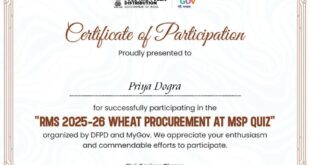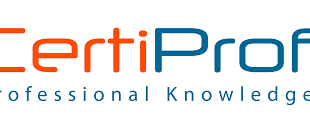Nutrition & Diet Free Certification | Nutrition Quiz Questions and Answers
About the Quiz:
Diet refers to the total amount of food consumed by individuals; whereas nutrition is the process of utilising food for growth, metabolism and repair of tissues. The relationship between diet and nutrition and health is 2-way; health status can be affected by nutrient deficiency and vice versa.
Terms and Conditions:
- There are 15 MCQ Questions in this test
- You need to score at least 50% to get a certificate
- A certificate of achievement
Benefits: Get Nutrition & Diet Certificate from The Digital Adda which you can share in the Certifications section of your LinkedIn profile, on printed resumes, CVs, or other documents.
Here are the Questions and Answers:
Question 1: According to the USDA, there is no difference between a “portion” and a “serving.”
- True
- False
Question 2: From which foods can we get carbohydrates? *
- Milk products and fruits
- Whole grain breads and cereals
- Table sugar, starchy vegetables, and legumes
- All of the above
Question 3: Which of the following is NOT true about water? *
- Drinking water boosts metabolism
- 85% of human brain tissue is water
- A good rule of thumb is to drink 10-12 glasses of water per day
- Water reduces kidney stones
Question 4: According to the USDA’s famous Food Pyramid, we need 2-3 servings of which food group every day? *
- Milk, cheese, and yogurt products
- Vegetables
- Cereal, bread, rice, or pasta
- A & B only
Question 5: Diet is a major contributor to overweight and obesity. How many U.S. adults would you guess are overweight or obese? *
- Nearly 50% of all U.S. adults are overweight or obese
- Nearly 60% of all U.S. adults are overweight or obese
- Nearly 70% of all U.S. adults are overweight or obese
- Nearly 80% of all U.S. adults are overweight or obese
Question 6: People with a body mass index (BMI) value of __ or more are considered obese. *
- 20
- 25
- 29
- 30
Question 7: Which body compartment is directly proportional to basal metabolic rate?
- body fat
- extracellular volume
- lean body mass (cell mass)
- plasma volume
- total body mass
Question 8: For the average medical student, what is the largest component of energy (caloric) expenditure?
- basal energy expenditure (BEE)
- food intake
- physical work
- specific dynamic action of foods
- none of the above
Question 9: What two components of energy input and/or output should you attempt to modify in a person who is overweight or obese?
- basal energy expenditure and food intake
- food intake and physical work
- food intake and specific dynamic action
- physical work and specific dynamic action
- None of these can or should be modified.
Question 10: A food contains 5 grams of carbohydrate, 10 grams of fat and 5 grams of protein. How many Calories (kcal) does this food provide?
- 20
- 80
- 105
- 130
- 180
Question 11: With regard to protein absorption, all of the following are true EXCEPT:
- 1dipeptides and tripeptides are absorbed by carrier mediated transport.
- amino acids are absorbed by broadly specific active transport systems.
- hydrolytic enzymes secreted in the gastrointestinal tract help limit the amount of dietary protein absorbed.
- infants, unlike adults, can absorb small amounts of undigested protein.
- absorption occurs in the intestine.
Question 12: Kwashiorkor is characterized by all of the following EXCEPT:
- gross underweight (< 60% of standard)
- edema
- depigmentation of hair and/or skin
- fatty liver
- hypoalbuminemia
Question 13: Which of the following are essential amino acids for infants?
- histidine and arginine
- leucine, isoleucine and valine
- tryptophan and methionine
- B and C
- A, B and C
Question 14: Fructose is
- absorbed passively in to the enterocyte against its concentration gradient.
- absorbed into the enterocyte without help of a protein transporter.
- absorbed into the enterocyte coupled to the influx of Na+.
- absorbed into the enterocyte by protein-facilitated, passive diffusion.
- less calorically dense than an equal weight of sucrose.
Question 15: Dietary fiber
- is digested in a fashion similar to that of dietary carbohydrate.
- is undesirable because it enhances triglyceride formation in the liver.
- is found primarily in animal products.
- enhances the rate at which chyme moves through the intestine.
- tends to decrease stool bulk.
Question 16: All of the following are true EXCEPT:
- dietary cholesterol intake should be less than 300 mg/day.
- total fat intake should be 30% or less of total calories.
- saturated fats should predominate over unsaturated fats in the diet.
- cholesterol is not an essential nutrient.
- arachidonic acid can be synthesized from linoleic acid.
 Priya Dogra – Certification | Jobs | Internships
Priya Dogra – Certification | Jobs | Internships



